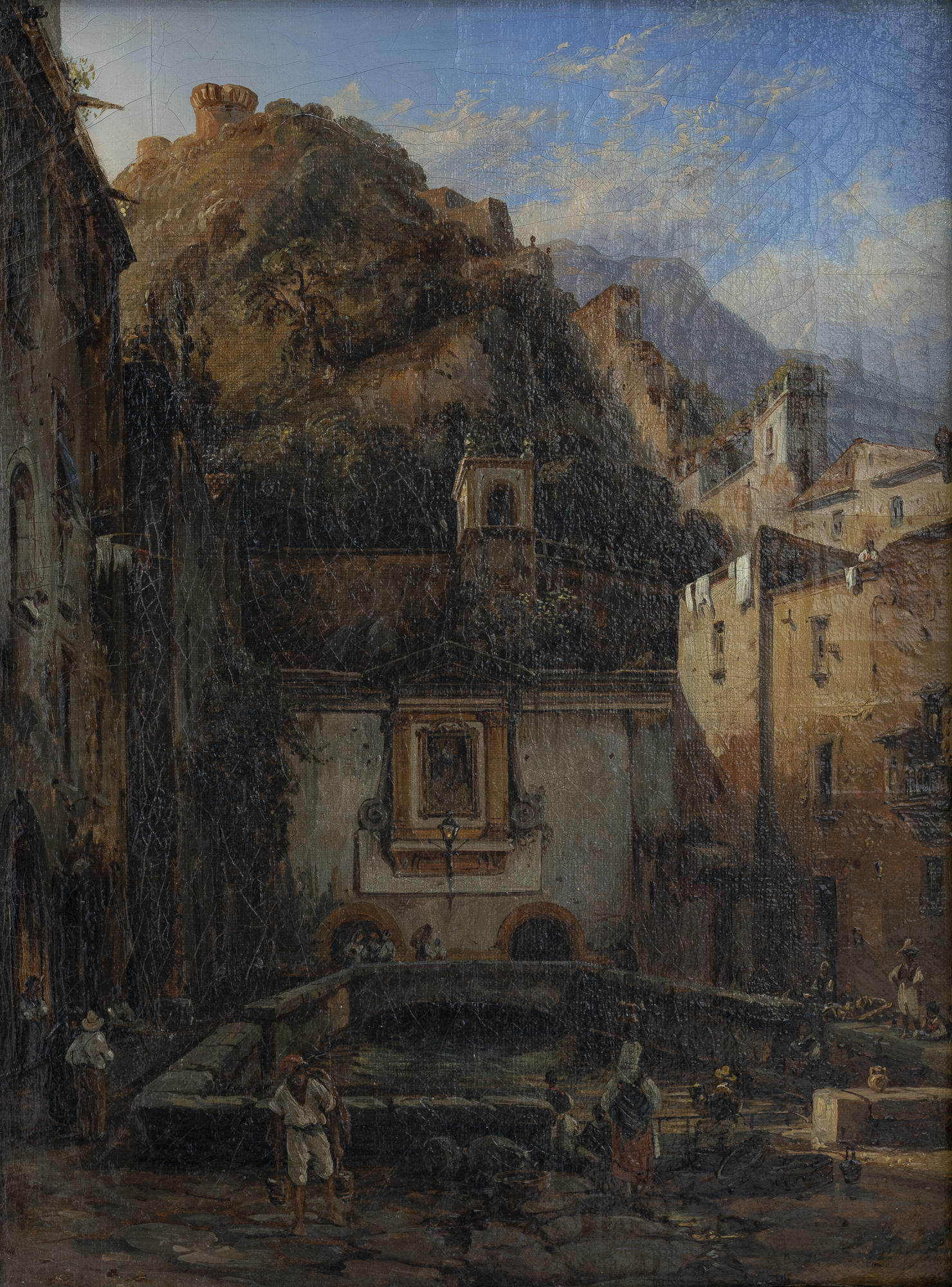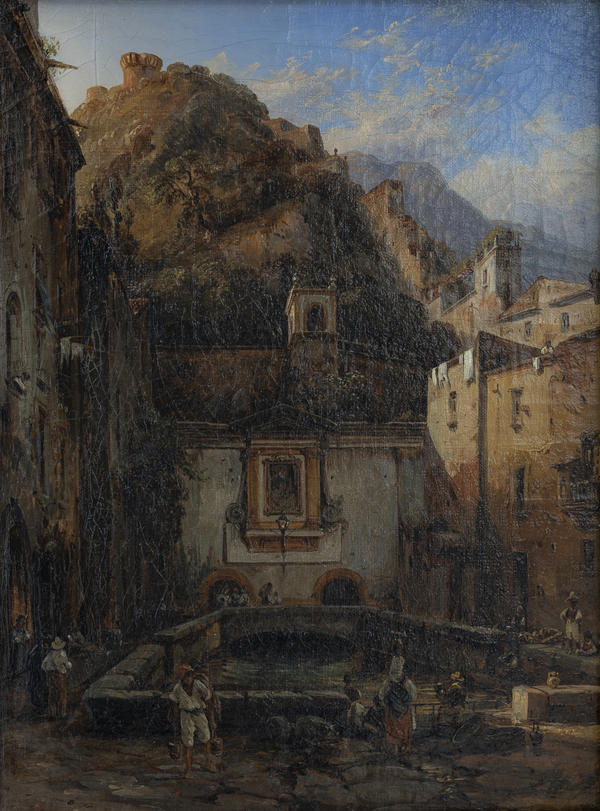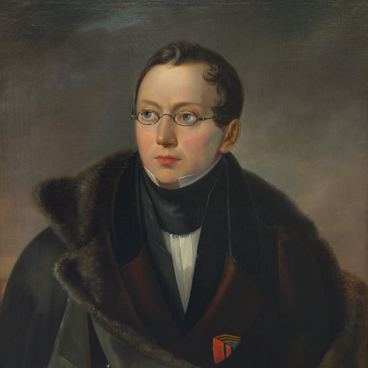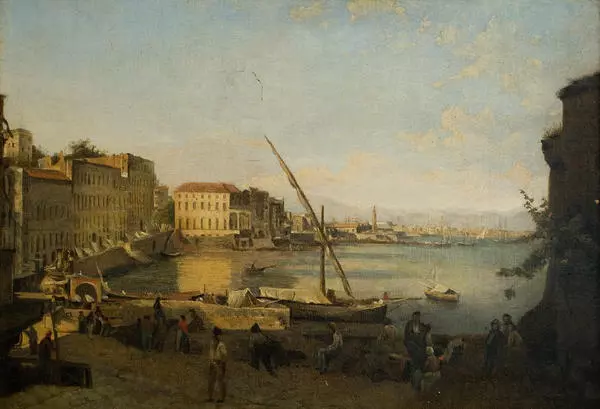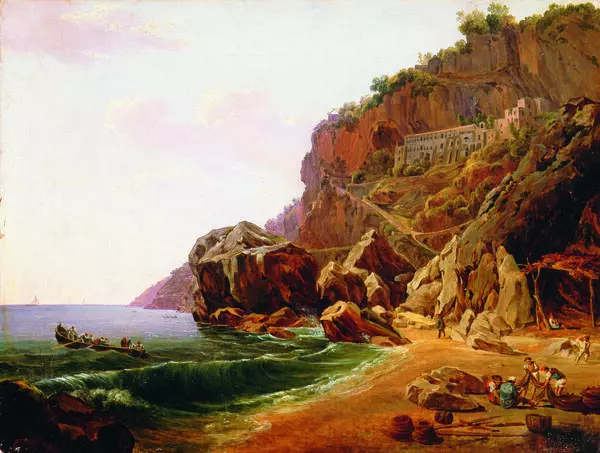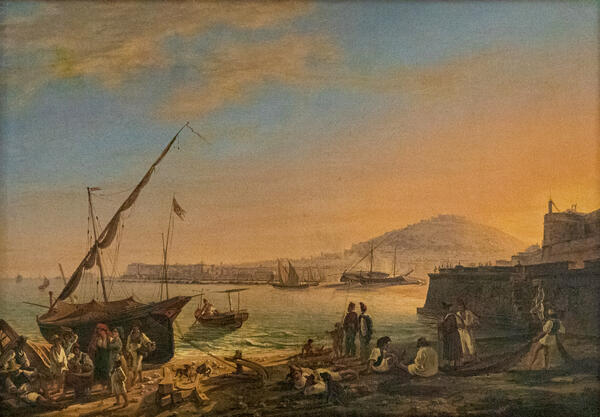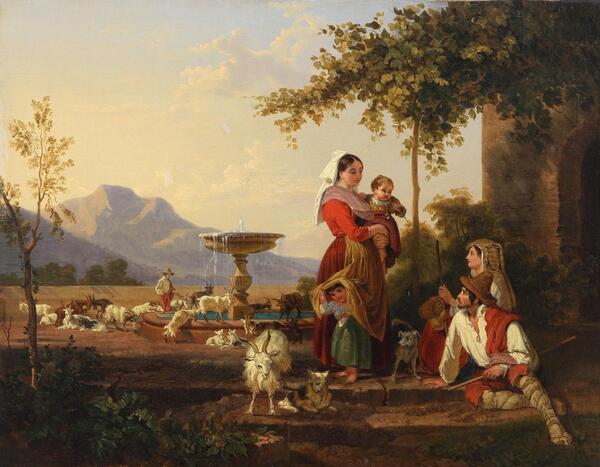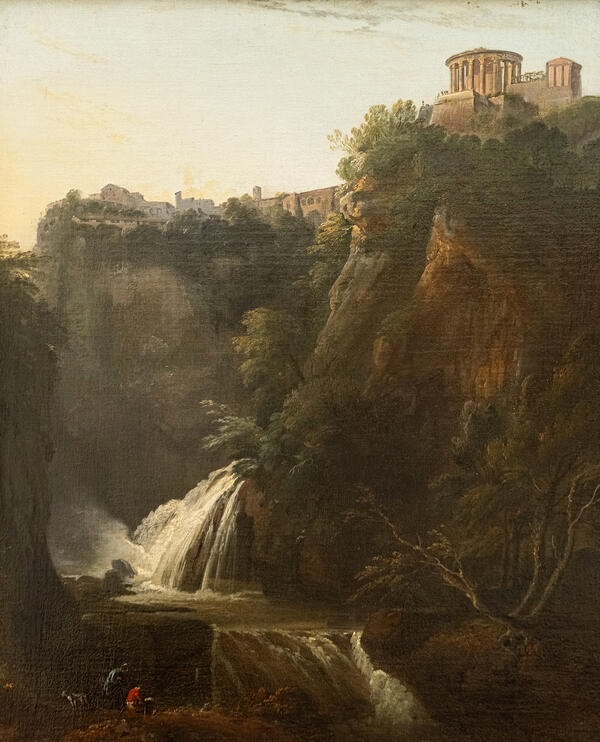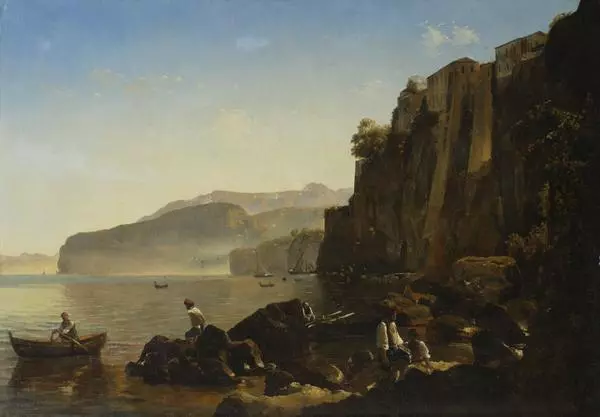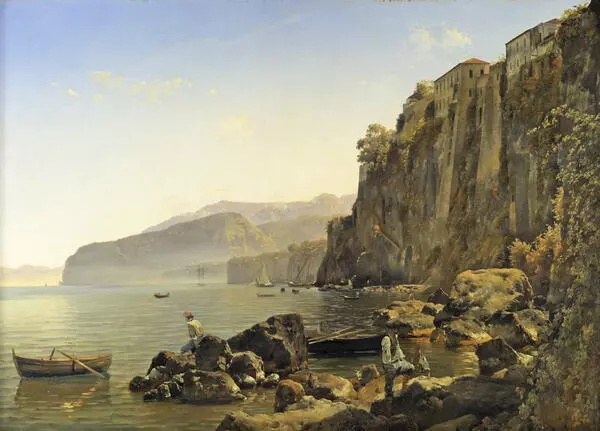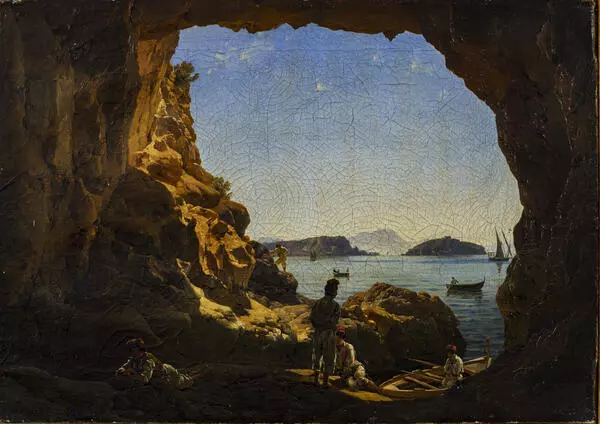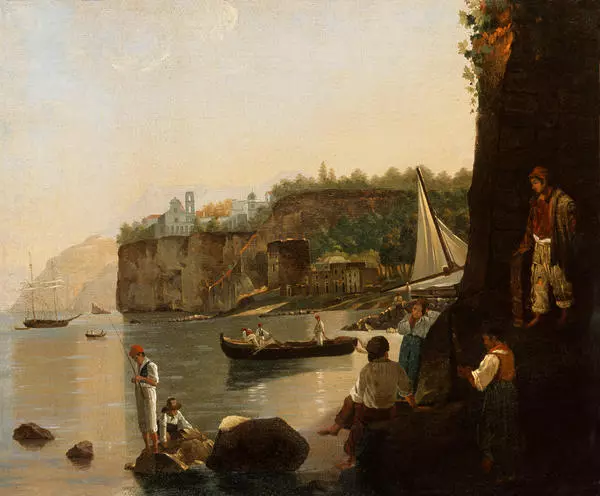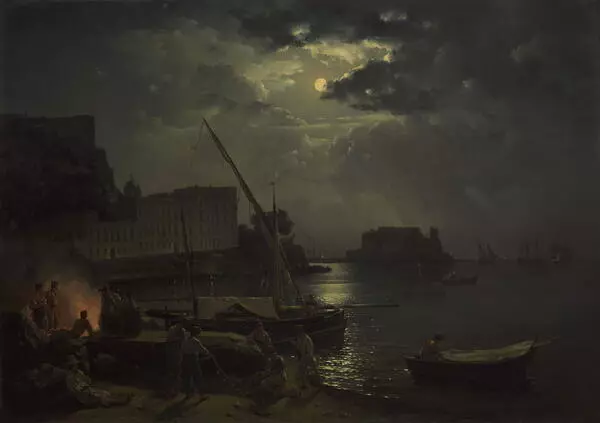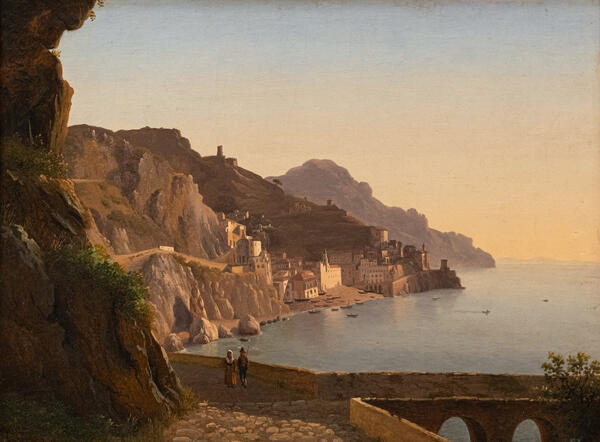Being one of the founders of the Russian romantic landscape, in the Academy of Arts Sylvester Fedosiyevich Shchedrin was a student of Fyodor Alekseyev, a bright representative of veduta genre — a town landscape. In the collection of Tyumen Museum and Educational Society his works are represented by the study Big Fountain in Castellamare painted presumably in 1820.
Sylvester Shchedrin came to Italy as a pensioner of the Academy in 1818,where he continued his self-education, creating studies from nature. Art researchers wrote that he was one of the first genuinely truthful poets of nature not only in Russian but in the world art too. His creative endeavours and achievements anticipated contemporary western European painters and laid the foundations of realism in Russian landscape painting.
Having arrived in Italy, the palette of his picturesque works was stereotypical — warm tones, sand-brown shades. However, over time the colours became lighter, the technique — airier. In 1826 he wrote to his friend, a sculptor Samuil Galberg: ‘At last I escaped those warm tones’. The painting from Tyumen collection is not dated, but judging by the artistic peculiarities and the presence of warm tones in it, it can be referred to the beginning of the 20s. Sylvester Shchedrin rarely used a vertical composition, but from 1819 -1822 he painted series of waterfalls in Tivoli, where such kind of composition construction can be met. The letters of the painter showed that in those years Sylvester Fedosiyevich opened for himself with enthusiasm vivid pictures of Italian streets' life and sunny landscapes of this country. He analysed, studied, peered into the scenes of people’s life. The Italian courtyard, enclosed from three sides, is depicted in the painting from the collection of the Tyumen Museum and Educational Society. This method allows to examine the walls of the houses, small genre scenes around vividely painted water, to pay attention to the architectural framing of fresco with the depiction of a saint and an icon lamp lit in front of it. All the courtyard is painted in warm colouring and only in the depiction of the shade some cold hues can be within view.
Sylvester Shchedrin came to Italy as a pensioner of the Academy in 1818,where he continued his self-education, creating studies from nature. Art researchers wrote that he was one of the first genuinely truthful poets of nature not only in Russian but in the world art too. His creative endeavours and achievements anticipated contemporary western European painters and laid the foundations of realism in Russian landscape painting.
Having arrived in Italy, the palette of his picturesque works was stereotypical — warm tones, sand-brown shades. However, over time the colours became lighter, the technique — airier. In 1826 he wrote to his friend, a sculptor Samuil Galberg: ‘At last I escaped those warm tones’. The painting from Tyumen collection is not dated, but judging by the artistic peculiarities and the presence of warm tones in it, it can be referred to the beginning of the 20s. Sylvester Shchedrin rarely used a vertical composition, but from 1819 -1822 he painted series of waterfalls in Tivoli, where such kind of composition construction can be met. The letters of the painter showed that in those years Sylvester Fedosiyevich opened for himself with enthusiasm vivid pictures of Italian streets' life and sunny landscapes of this country. He analysed, studied, peered into the scenes of people’s life. The Italian courtyard, enclosed from three sides, is depicted in the painting from the collection of the Tyumen Museum and Educational Society. This method allows to examine the walls of the houses, small genre scenes around vividely painted water, to pay attention to the architectural framing of fresco with the depiction of a saint and an icon lamp lit in front of it. All the courtyard is painted in warm colouring and only in the depiction of the shade some cold hues can be within view.
